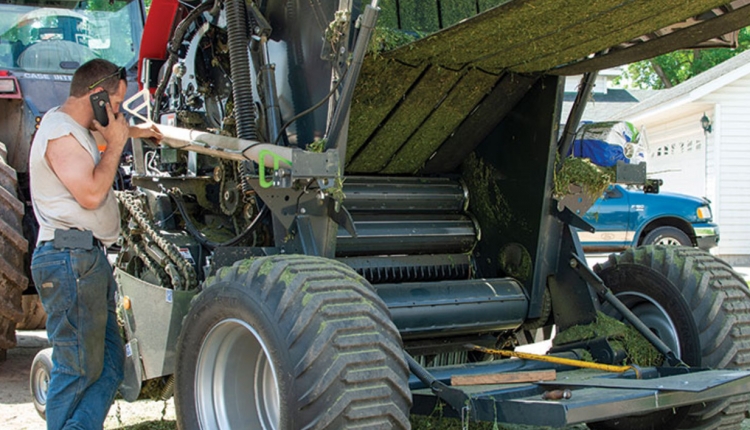The author is a managing partner in Elite Ag LLC, Leesburg, Ga. He also is active in the family farm in Rutledge.

Preventive equipment maintenance is a frame of mind that can go a long way in impacting the year’s bottom line.
For many of our customers, their round baler is the primary forage harvesting machine. As the baler goes, so goes the entire operation. With that in mind, I want to offer a short checklist of some items that need to be reviewed on your baler before the first bale rolls out the back end.
The most logical place to start is at the front hitch. Make sure to look at all of the bolts or welds and ensure they are not loose or cracked. The baler hitch can take a lot of abuse. The same is true for the power take-off (PTO) shaft. These days, most balers come with a constant velocity (CV) shaft. It is critical to remove all of the shielding at least once a year to inspect the joint for wear and to make sure grease fittings are in place and will accept grease.
The PTO shaft also needs to be pulled completely out and properly lubricated. This is important so that the shaft doesn’t bind and apply pressure to the main baler gearbox or the tractor’s PTO during a turn. Either of those are costly repairs when compared to simply greasing a PTO shaft.
Next, most commercial balers have some sort of clutch on the PTO and, depending on the clutch manufacturer, instructions for inspecting and adjusting the clutch to ensure they slip when needed. Some manufacturers have YouTube videos explaining the process for their specific clutch.
The main T-shaped gearbox is often overlooked, and a preseason inspection is a good time to check the oil level and seals for leaks. Each manufacturer has a similar way of supplying power to the baler, but there are small differences. Chain and sprocket wear is critical to a baler’s performance. A loose chain or worn sprocket can cause the pickup mechanism to slip or the main drive roller to jump.
A lot of newer balers have idler sprockets that are tensioned by springs. In the baler’s operator’s manual, there will be a measurement for the length of these springs so that each chain operates with the proper tension and can “give” under heavy load pressures. You may need to replace the chain or remove a link to achieve proper tension on the chain. Doing these things will lengthen the life of the sprockets.
The pickup is where the crop enters the baler, and it demands attention. Check the tines and stripper bands for excessive wear or broken teeth. If equipped with a cam-type pickup, checking the cam roller bearing is a difficult task, but lying on your shop floor is much more pleasant than lying on stubble and/or fire ants while working in 95°F heat.
Keep belts snug
Another critical part of the baler is the belts. If your baler uses belt lacing, it is a good practice to pull out the belts and re-lace them every 10,000 bales or so. After the belts stretch, they can’t apply the same pressure as when they are at the correct factory measurements. A lot of balers now have different length belts, and if they are extremely worn, you can convert the long belts to shorter ones.
A majority of the new balers apply net wrap to bind bales, using rubber rollers to feed the net to the bale. Inspecting the rubber roller is critical to make sure there are no rough places or cuts on the roller that could cause the net to grab. In the case of the rear-mounted net wrap balers, the net feeds under the tailgate.
There is a plate on each tailgate to hold the net to the belts, and this is designed to be a wear item and needs to be checked. It’s usually in the corners where the wear occurs, and the corners are good places for the net to hang up.
The bearings in the bale chamber seem to cause the most angst among round baler owners. Now is the time to check them, not when smoke is coming out of the top of the chamber. Relieve the pressure on the belts in the chamber so that you can get in the bale chamber to check each of the rollers for any excessive movement.
I also encourage my customers to relieve the pressure on the belts during the off-season, especially on older balers. This cuts down on the odds of a bearing getting a flat spot due to constant pressure over the winter months. A bale chamber that is empty and closed is when the belts and bearings have the greatest pressure on them.
Good luck this year and safe baling!
This article appeared in the April/May 2022 issue of Hay & Forage Grower on page 25.
Not a subscriber? Click to get the print magazine.

